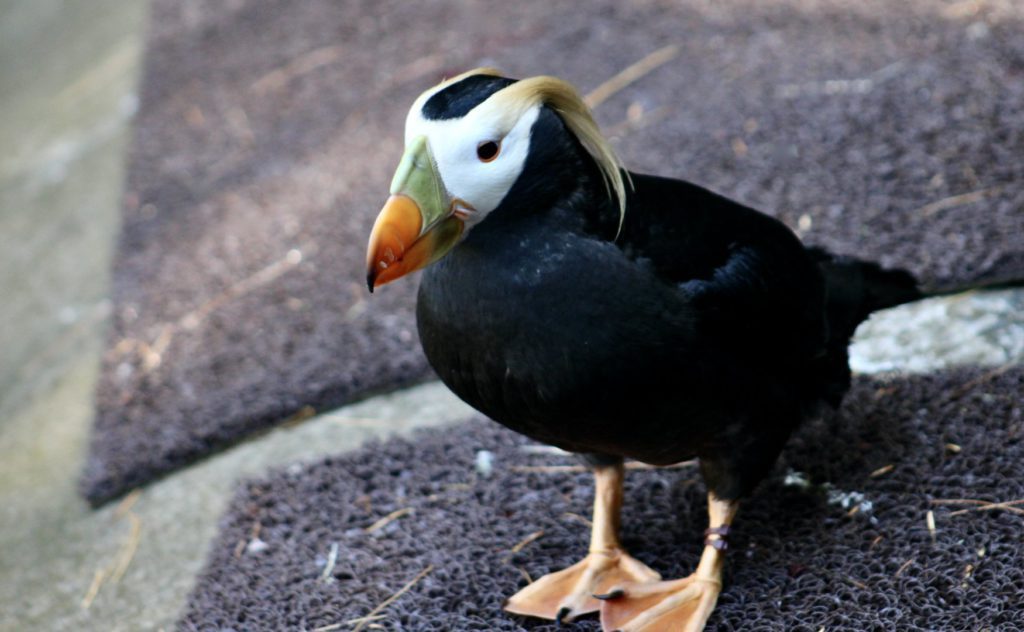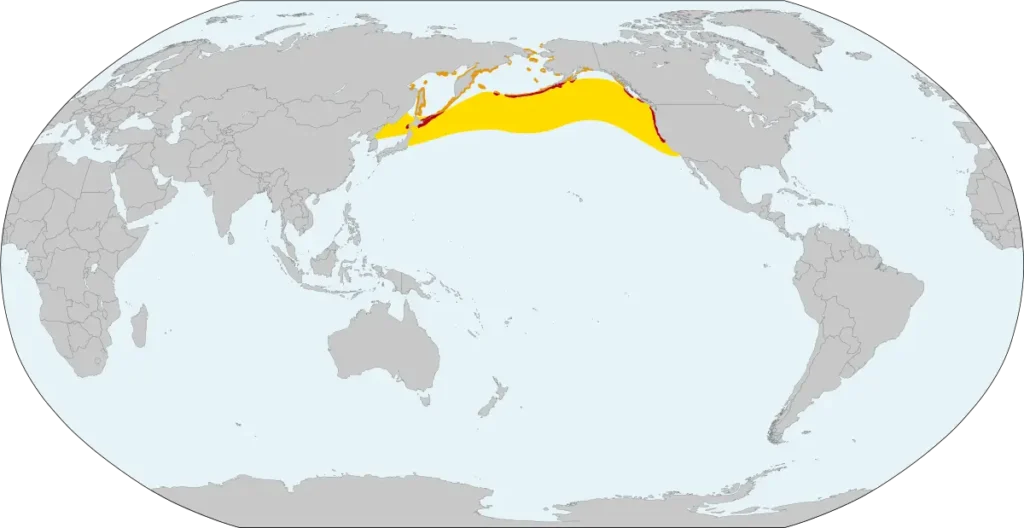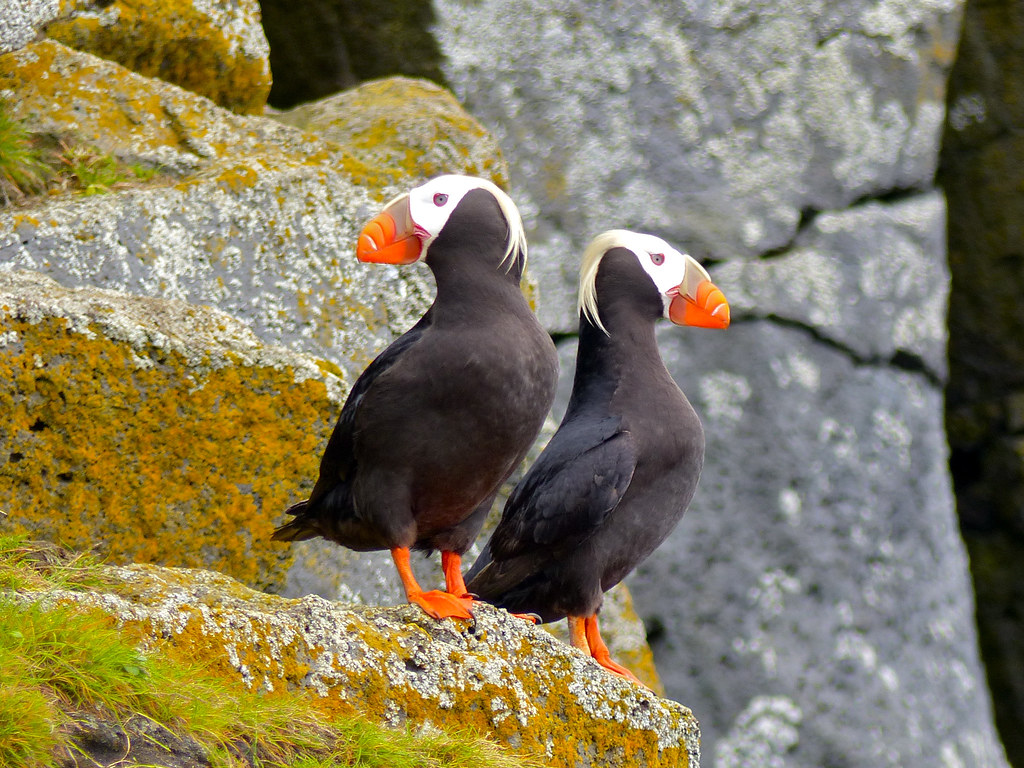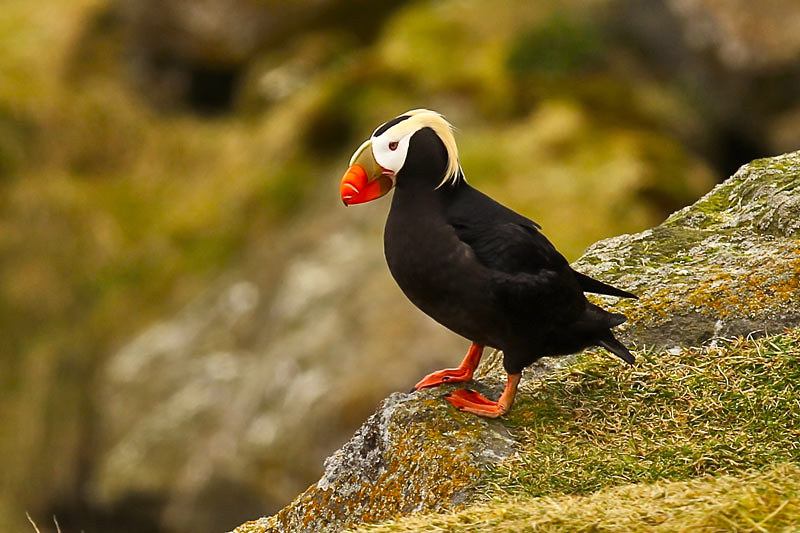Pacific Dead End (Fratercula cirrhataThe crested puffin is one of the most colorful seabirds found in the frigid waters of the North Pacific Ocean. Due to its unusual appearance – black plumage, massive beak and characteristic “bangs” of golden feathers – this bird attracts the attention of researchers and wildlife lovers.
He is a true sea acrobat, an excellent swimmer and diver, and is also known for his social behavior and monogamous relationships. Let's look at all the features of the life of this unique bird.

1. scientific classification and related species
🔹 Scientific classification:
✔ The Kingdom: Animals (Animalia)
✔ Type: Chordal (Chordata)
✔ Class: Birds (Aves)
✔ Row: Gray-haired (Charadriiformes)
✔ Family: Alcoves (Alcidae)
✔ Gender: Dead ends (Fratercula)
✔ View: Pacific Dead End (Fratercula cirrhata)
🔹 Other types of dead ends:
✔ Atlantic Dead End (Fratercula arctica)- has a bright tricolored beak, lives in the Atlantic Ocean.
✔ Horned Dead End (Fratercula corniculata)- differs in horn-shaped outgrowths above the eyes.
Pacific Dead End the biggest among the dead endsand its distinctive feathered "bangs" make it particularly recognizable.
2. Appearance and dimensions
✔ Body lengthSize: 35-40 cm
✔ WingspanSize: 60-65 cm
✔ WeightWeight : 500-800 g
🔹 Characteristic features of appearance:
✔ Black plumage with a white face.
✔ Large light eyes with red-orange rims.
Huge massive beak, painted in bright orange and yellow colors.
✔ Long feathery "bangs" of golden color that appear during the breeding season.
✔ Orange webbed feet.
🔹 Interesting features:
✔ Young puffins do not have bangs, they appear only after a few years of life.
In autumn, the beak becomes less bright-the outer keratin layer gradually peels off.
✔ Deadlocks can store up to 20-30 fish simultaneously in the beak, thanks to special rough plates on the inside of the beak.

3. habitat and range
🌍 Where is the Pacific Cul-de-sac?
✔ The North Pacific Ocean-from the coast of Japan to Alaska and California.
The main colonies are located in Kamchatka, the Aleutian Islands, the Kuril Islands and in the waters of the Bering Sea.
It prefers rocky coasts and uninhabited islands, where it breeds in large colonies.
🔹 Interesting nesting sites:
The Aleutian Islands are one of the largest puffin populations in the world.
The Island of St. Lawrence (Alaska) is the place of the largest concentration of these birds during the breeding season.
✔ Commander Islands ( Russia) - a zone where puffins easily interact with other seabirds.

4. lifestyle, hunting and nutrition
🍽 What do Pacific puffins eat?
✔ Small fish (herring, capelin, anchovies).
✔ Squid, shrimp, small shellfish.
Planktonic organisms in the period of fish deficiency.
🔹 How do they hunt?
✔ Submerged under water to a depth of up to 60 m.
✔ Use the wings as fins for scuba diving.
✔ May hold their breath up to 90 seconds.
🔹 Interesting:
✔ In flight, they can accelerate to 80 km / h.
✔ Use the Earth's magnetic field to navigate the open ocean.
5. reproduction and life cycle
✔ Monogamous birds - form couples for life.
✔ Nest in nori or rock gorges.
✔ One pair of puffins only hatch each year one egg.
✔ Incubation continues 40-50 days.
✔ Chick (pauss, puffling) stays in the socket for about 7 weeks, and then goes to the open sea.
🔹 Interesting habits:
Puffins return to the same nesting site every year.
✔ Males help females build their nests.
✔ To strengthen the bond, the couple performs ritual "beak strikes".
6. natural enemies and threats
🚨 Natural enemies:
✔ Eagles, gulls and skuas can attack adult puffins.
Foxes, raccoons and arctic foxes destroy nests.
🌍 Threats from people:
Catching fish leads to a shortage of food for puffins.
✔ Pollution of the oceans with plastic and oil.
✔ Climate change affecting their habitat.
🔹 Population size:
Despite a certain decline in the population, the overall population is stable.
✔ Most puffins live near the Aleutian Islands.

7. Interesting facts about the Pacific Cul-de-sac
✔ Because of its bright appearance, it is called "the sea clown”.
✔ Young chicks only fly out of the nest at nightto avoid predators.
Puffins spend most of their lives in the open sea and return to land only to nest.
Their "bangs" play a role in mate selection – males with longer bangs are more attractive to females.
Conclusion
Pacific Puffin is a true masterpiece of nature, combining the grace of a Sea hunter and the brightness of a tropical bird. Despite the threats, this amazing inhabitant of the northern seas continues to amaze with its uniqueness and endurance. 🔥